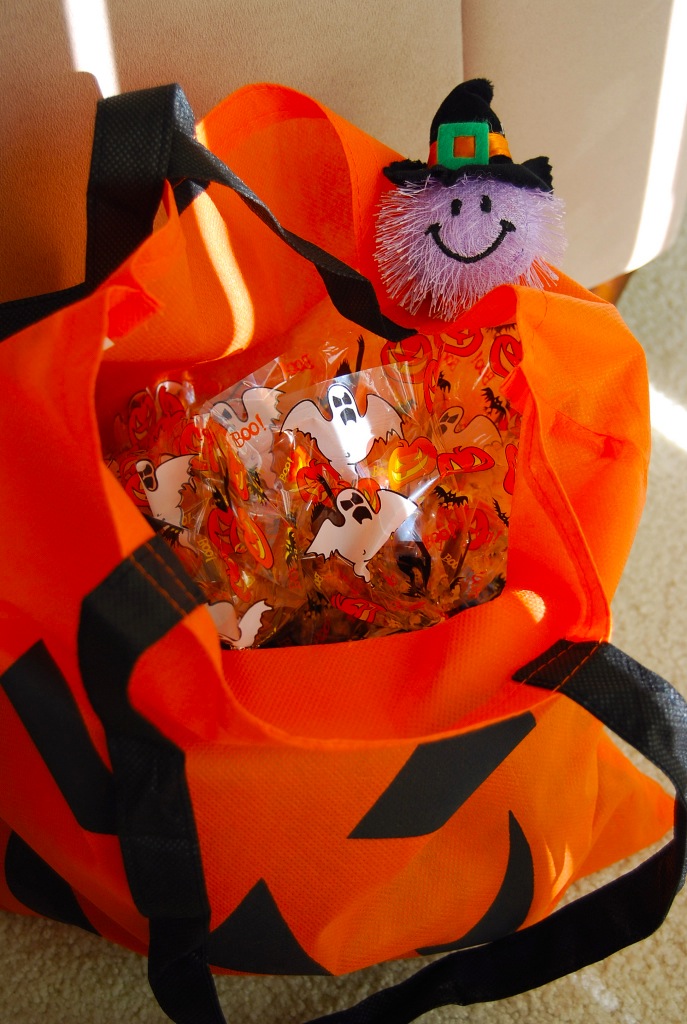TWH – The secular holiday, Halloween, has begun to resemble the secularized Christian holiday, Christmas. Both holidays have experienced a stretch of conspicuous consumption in the last decades. The National Retail Federation estimated that U.S. consumers before the pandemic annually spent $9.1 billion on Halloween costumes, decorations, and treats.

Image credit: Janine from Mililani, Hawaii, U.S. – CC BY 2.0
Numerous sources like Sustainability Chic have reported that most Halloween décor and costumes are single-use items. Single-use items end up in landfills or as pollution. That outcome makes this holiday an ecological disaster. Popular Science previously reported that most wrappings for candy are made with plastic and aluminum. Current recycling technology cannot separate that mixture. “Sustainability Chic,” Popular Science, and The Unsustainable Magazine, have all suggested Halloween risk reduction tactics.
The University of Virginia Sustainability Center reported on tactics to make Halloween more eco-friendly. Florida International University (FIU) and A Clean Bee have published risk reduction tactics for this holiday.
These tactics do not require abstaining from secular Halloween celebrations. Melinda Paduani, a Ph.D. student, told FIU’s CaseNews, “While you’re out having fun on Halloween remember to be mindful of your choices, not only how you choose to celebrate, but also how you dispose of your Halloween-related waste.” Paduani continued, “One of the main sources of debris [that] I find in the mangroves is food wrappers. This can easily be avoided by making it a goal to celebrate sustainably and avoiding single-use plastics as much as possible.”
For people unfamiliar with mangroves, these tropical trees live in salt and or brackish water. Mangroves stabilize and build coastlines. They are also home to some of the most productive ecosystems on the planet supporting fisheries the world over. As such, they could play a key role in adapting to rising sea levels.
Ways to reduce ecological risk from Halloween costumes
Halloween shopping generates more waste than current recycling technology can process. Re-using and repurposing old material limits the amount of waste generated. In fact, reusing and re-purposing material changes it from waste into something useful, and actually reduces waste. Perhaps best of all given the current rising costs of everything, it also costs less.

Image credit: nancy sticke via Pixabay
Among the potential hazards are the toxins and microplastics found in many readily available glitters and face paints. Non-toxic face paint and biodegradable glitter do exist and have become more abundant.
Companies like Natural Earth Paint, Gimme The Good Stuff, and Ecotrade Company all offer biodegradable glitter and face paints that are made from plant cellulose. Etsy, Amazon, and other online retailers also offer similar products that are biodegradable. The cost for biodegradable options is generally more expensive than non-biodegradable products. However, as the demand for such items has grown and with more companies stepping in to meet that demand, prices have come down somewhat.
Ways to reduce ecological risk from Halloween decorations
Pumpkins can be purchased from farmer’s markets or directly from local farmers and pumpkin patches rather than big chain grocery outlets, which both help support local economies and helps reduce the impacts of shipping.
Pumpkins can be turned into soups and pies, or simply added to the compost pile once they have served their purpose as seasonal décor. The wax from burning candles inside a carved pumpkin could impact how compostable it might end up being. An easy fix for this would be to use candles made from biodegradable ingredients or use a battery-operated tea light. Making Halloween more eco-friendly may require adapting some customs.
A number of options can be utilized for creating decorations, like reworking yarn and old stockings into spider webs and using cardboard from shipping boxes to create tombstones or other decorations. Old sheets and t-shirts could be used to create ghost or mummy costumes or décor.
At Halloween parties, substituting biodegradable cups and plates for plastic can help to reduce plastic use. Saving and reusing decorations from year to year, especially those made from plastic can help reduce their potential environmental impact and damage.
Ways to reduce ecological risk from candy wrappers
One company, Terracycle, does recycle plastic wrappings. The cost is $86.00 for the company’s 11″x 11″ small recycling box. The box does come with a prepaid return shipping label. Terracycle offers boxes in a number of countries: Australia, Canada, France, Nederland, New Zealand, the United Kingdom, and The United States. Some might consider the expense of using Terracycle to be too costly.

Image credit: Anne Karakash via Pixabay
Another option is the Trick or Trash™ program developed by Rubicon which provides free boxes to independent businesses, schools, and community organizations in the U.S. For personal use, the 11″x 11″ box is $100.00, but all boxes include a prepaid return shipping label and a Certification of Recycling that shows how much waste they individually kept out of the landfill by recycling.
The Trick or Trash™ program was started in 2019, and it sent out 450 boxes in its first year. In 2021, the program says it sent over 2,000 boxes to more than 1,250 businesses, schools, and community organizations. They estimated that the program last year helped to recycle 10 million candy wrappers, keeping them out of landfills. This year over 2,200 boxes have been ordered.
The Wildlife Federation is the official education partner for the program and Rubicon provides a plethora of educational information that includes webinars, videos, and lesson plans for educators.
The biggest challenge is liable to be found in making sure that only the correct items to be recycled are placed in the boxes. Terracycle accepts only plastic flexible packaging and blister packs, and Trick or Trash™ only plastic wrappers. Though Trick or Trash™ has the ability to remove paper and foil wrappers through an automated process.
Food or other waste ending up in the bins has the potential to contaminate the recyclables and either complicate the process or even prevent the items from being recycled.
The vast majority of wrappers will end up in landfills. And a significant number of discarded wrappers end up as litter in public and natural places which can leak toxins, clog up waterways, and threaten wildlife.
Non-bio-degradable wrappers will last for years with the plastic slowly degrading and shedding microplastics. Eventually, many of those microplastics end up in the ocean and in intertidal regions.
Microplastics have the potential to impact animals, birds, and fish if they ingest them, eventually, microplastics accumulate in their digestive tracts and interfere with digestion and food absorption.
People can also bake their own sweets or look for certification of eco-friendliness. The Fair Trade Certified, FSC, or The Vegan Trademark offers such certification.
Some companies, like Alter Eco, make chocolates wrapped in biodegradable material. Some major candy manufacturers are moving towards all recyclable or biodegradable packaging. For example, Nestle has plans to move to entirely recyclable material by 2025.
Secular Halloween and spiritual Samhain
Note, these risk reduction tactics focus on the secular holiday, Halloween. Some of the same rules apply to the religious holiday, Samhain. Two simple strategies apply. Avoid or, at least, reduce the use of plastic items or those items derived from oil-based products. Avoid, or at least reduce single-use items.
Individual-level solutions and the socio-political problem
Ecological responsibility is seemingly at odds with the throwaway culture of consumer capitalism. Single-use items generate large profits for the companies that make them. In contrast, multi-use items generate a profit only once. Current accounting practices fail to tally the environmental costs of plastic or the costs of environmental biodegradation.
Recycling, sourcing products that are ecologically sound, and other methods of reducing waste have the disadvantage of being labor-intensive, and in many cases more costly.
The majority of these tactics for mitigation occur at the individual level, but the area in which the largest impact would be felt in correcting the problem is at the socio-economic-political level. Public pressure and opinion, whether it is expressed at the cash register, the ballot box, or in community meetings, do have the potential to impact the decisions made by policymakers and even companies.
And yet, individual-level solutions do have beneficial impacts on the environment. Whenever feasible, giving these greener options a try can make a difference.
The Wild Hunt is not responsible for links to external content.
To join a conversation on this post:
Visit our The Wild Hunt subreddit! Point your favorite browser to https://www.reddit.com/r/The_Wild_Hunt_News/, then click “JOIN”. Make sure to click the bell, too, to be notified of new articles posted to our subreddit.
